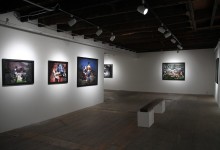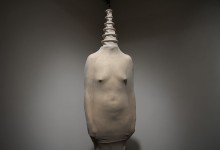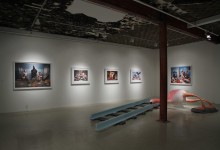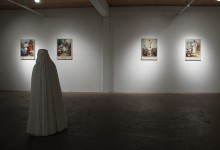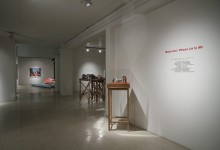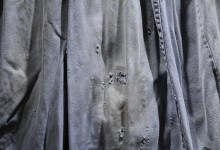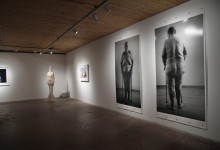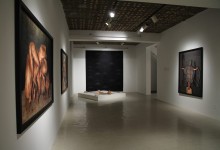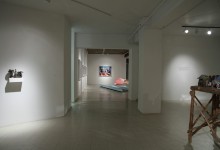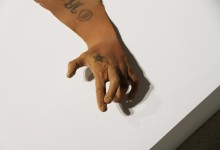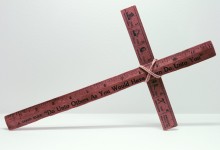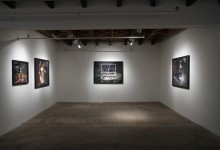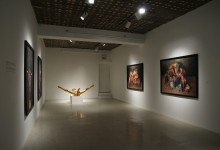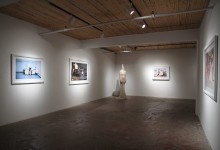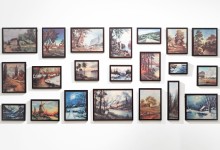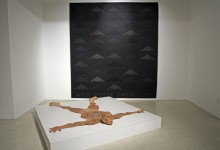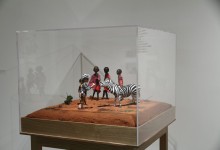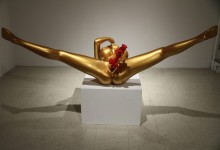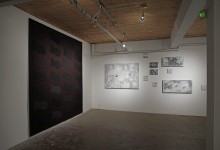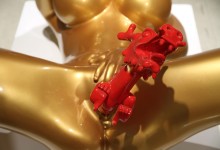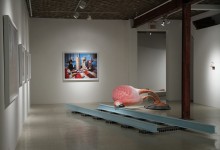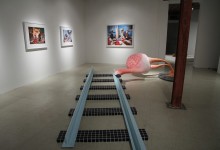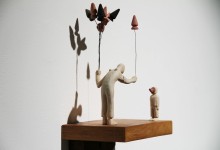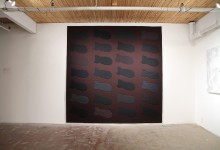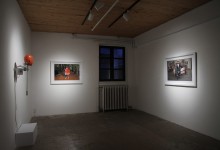Please Lie to Me (Art Mûr’s 15th Anniversary Group Show)
Lois Andison, Simon Bilodeau, Dominique Blain, Susan Bozic, Evergon, Clinton Fein, The Gao Brothers, Renato Garza Cervera, Sarah Garzoni, Karine Giboulo, Dina Goldstein, Nicolas Grenier, Jonathan Hobin, Guillaume Lachapelle, Cal Lane, Nadia Myre, Cooke-Sasseville, Jennifer Small, Barbara Todd, Colleen Wolstenholme
I love truth. I believe that man has need of it; but assuredly he has still greater need of the illusions that encourage and console and set no limit to his hopes and aspirations. Rob him of his illusions, and man would perish of very weariness and despair.
– Anatole France, The Bloom of Life
Does averting your eyes from the truth constitute an illusion, a lie? At some point, all of us have faced a truth so bitter that we would have preferred a lie. But while such truths are shocking to hear, they are even more shocking when seen, seeming harsher. Last year, Wajdi Mouawad, Artistic Director of the National Arts Centre French Theatre, chose artworks by Diana Thorneycroft to illustrate the theatre’s promotional calendar. The hostile reaction that ensued in the national capital media prompted Mr. Mouawad to defend his choice in an eloquent letter to the editor of the daily Le Droit:
Artists are there to disturb, disconcert, question, move, reveal and give voice to the world in which they live, using all the means at their disposal. But for that to happen, they must do things that will first and foremost disturb, disconcert, question, move, reveal and give voice to themselves.[1]
Many artists fall into this category – their approaches may vary but their message remains a call to reflect and question.
Humour is one of the means they use to demonstrate the absurdity of human behaviour. In Dating Portfolio, Susan Bozic pictures the perfect romantic relationship – the only catch is that the perfect man is not human. A sad truth! For its part, the Cooke-Sasseville duo produces satirical works tinged with humour that nonetheless convey important messages. Their installation La Vie en Rose (featuring a pink flamingo with its head on a train track) makes us realize that we often underestimate the conditions that lead to suicide. And Mourir enfin presents a grim scene in which three children stare in shock at the devastation they have wrought.
“There’s nothing I can do about it” is probably the worst lie of all, because it allows suffering, disasters and horrors to continue indefinitely. Contemporary artists appropriate headlines and shocking images from the media to confront their audiences with situations that they find unacceptable. Looking at a work like Karine Giboulo’s Village démocratie, which is a very personal interpretation of a real crisis, we feel a sense of powerlessness. But is that feeling justified? Dominique Blain, Nadia Myre, Renato Garza Cervera, Clinton Fein, Simon Bilodeau and Barbara Todd have all have drawn on current events to create provocative works that speak to us and lead us to seriously question ourselves.
Some American studies have shown that we lie on average twice a day (to others, not counting the lies we tell ourselves); other studies indicate that children naturally acquire the capacity to lie around age four. We are convinced that we are teaching them the importance of truth and that it’s bad to lie, but they quickly grasp the message that not all truths should be spoken: “You musn’t say that to people,” “We don’t talk about such things,” and so on. That’s first lesson in lying, and we complete their training by persuading them that Santa Claus is real.
In the series The Fallen Princesses, Dina Goldstein reinterprets Disney fairy tales by injecting a harsh dose of realism that adds teeth to the outmoded stories. The bubble we build around our children is often disconnected from the real world in which they have to grow up. With Grandir n’est pas si difficile, Guillaume Lachapelle tests our childlike naiveté: At first glance, it appears to show a kind person offering a child a balloon, but a closer look (and a certain familiarity with adult products) reveals that the balloon is in fact a butt plug (sex toy). The fact is that the traces of naiveté we retain as adults make us vulnerable, and the works of both Jennifer Small and Colleen Wolstenholme point up the way religion exploits this vulnerability. In another vein, Jonathan Hobin’s In the Playroom, a series of photographs of children reenacting catastrophic events in the form of play, sparked a controversy that earned him an interview on CNN. His detractors were shocked by the pictures, claiming that the children cast in the staged scenes of horror were too young to understand their roles and could suffer severe aftereffects. And yet, if I recall correctly, my generation grew up playing cowboys and Indians (which after all consisted of pretending to kill each other!).
Should we question the naive innocence in which Western children are being brought up and which we adults complacently encourage?
In his acceptance speech for the 2005 Nobel Prize in Literature titled “Art, Truth and Politics,” Harold Pinter declared, “The search for the truth can never stop. It cannot be adjourned, it cannot be postponed. It has to be faced, right there, on the spot.”[2]
[1] Wajdi Mouawad, “Le Véritable rôle de l’artiste,” Le Droit, April 13, 2010. Translation.
[2] Harold Pinter, “Art, Truth and Politics,” Nobel Lecture, Stockholm, The Nobel Foundation, December 7, 2005, p. 3.



